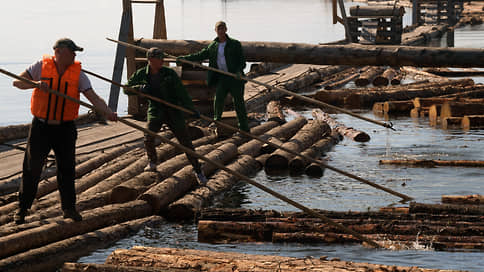Timber merchants ask to exclude sawn timber from the timber turnover accounting system LesEGAIS
[ad_1]

Timber merchants of the North-West region faced another problem from the change in the timber turnover accounting system LesEGAIS. Due to its requirement to generate electronic documents at each warehousing point, exporters lose the zero VAT rate on a significant part of the journey through Russia, which dramatically increases the cost of transportation. In addition, the companies note, there are still many shortcomings in the system itself.
As it became known to Kommersant, the Vologda timber companies turned to the Union of Timber Manufacturers and Exporters with a request to initiate changes in the legislation on wood accounting and exclude sawn timber from it.
The letter notes that the problem arose after the next modernization of the LesEGAIS system, as a result of which the requirement to enter information into the system began to apply to places of storage and processing of wood.
The balance model, which reflects the balance of products in warehouses, was supposed to start from January 1, 2022, but is still working in test mode. The launch of the full version is still delayed due to frequent failures.
At the same time, market participants note that now, against the background of the imposition of sanctions, logistics chains have fundamentally changed in the sale of timber products, including sawn timber, for export. When transporting by several modes of transport, exporters have to organize several places for storing timber in different regions. This means that it is necessary to enter into LesEGAIS information about the movement of wood for each of them, as well as generate new electronic accompanying documents and terminate the old ones. “All this incurs additional financial and time costs, requires the involvement of personnel. And in the face of increased transportation costs, problems with the allocation of rolling stock, a significant decrease in lumber prices in the main sales market – China, additional costs lead to unprofitable sales of lumber, ”the letter says.
The critical issue is the application of a zero VAT rate for exports.
Now, they explain in the timber industry companies, a declaration indicating the number of electronic documents for the goods is formed at the place of shipment, that is, at the enterprise. But with the final introduction of the wood accounting balance model, this will have to be done at the place where the last electronic document was created (as a rule, at the point of export). The interlocutors of Kommersant explain that an electronic accompanying document (ESD) for products can be issued within the framework of the tested balance system only if a positive balance in the warehouse is confirmed in LesEGAIS. Otherwise, the design is blocked. That is, if you need to transport wood in several stages, then first draw up an ESD from the first place of storage, then it is extinguished, and after a positive balance appears in the system, you can issue an ESD for the next stage of transportation. At the same time, they assure the companies, “customs services zealously monitor the fulfillment of the requirement to issue an ESD before filing a declaration.”
All this will lead to the fact that transportation is out of the export regime, and enterprises will not be able to apply the zero VAT rate under Art. 164 of the Tax Code, since this regime starts from the place and from the moment of filing the customs declaration for goods. Thus, Kommersant’s interlocutors say, if a legislative norm is adopted obliging the submission of a customs declaration at the place where the last ESD was formed, the cost of transporting goods from the manufacturer to the ports of the Far East will increase by 20% – the VAT rate for transportation within the Russian Federation.
Because of this, according to the calculations of the Vologda timber merchants, their logistics costs to China will increase by 21 thousand rubles. from each container (more than 400 rubles per cubic meter of lumber). Companies from the Arkhangelsk region calculated that when exporting to China via Moscow, the difference between the zero rate and the standard VAT rate is 47.5 thousand rubles. per container (approximately 48 cubic meters).
Vladimir Bulavinat that time the head of the FCS, September 12, 2019:
“Those timber products that are presented to customs for sale abroad, we must know that they are legally cut down. Now it comes from the LesEGAIS system… We have a separate field for special marks at the electronic customs, where the business puts down all transactions with wood.”
Nikolai Ivanov, vice president for government relations at Segezha, confirmed to Kommersant that “technical problems with LesEGAIS do exist.” “And until the moment when the system is brought to perfection and failures are excluded, including at the stage of interdepartmental interaction with the Federal Customs Service and Russian Railways, it is advisable not to include the blocking system. Since they will require additional administrative and financial costs from exporters against the backdrop of a difficult situation in the world markets,” he said.
Sergey Shevelev, the Director of Housekeeping of OOO PKP Titan, in turn, notes that “despite the fact that we have been working in LesEGAIS for more than a year, this system still remains crude, periodically puts us in a stupor.” In his opinion, this will destabilize the already difficult situation in the industry. Deputy Chairman of the Regional Assembly of Arkhangelsk Alexander Dyatlov notes that the problems of modernization of LesEGAIS are of concern to all large timber enterprises in the North-West of Russia. According to him, a corresponding appeal to the government has already been prepared, which will be sent in the coming days.
[ad_2]
Source link





